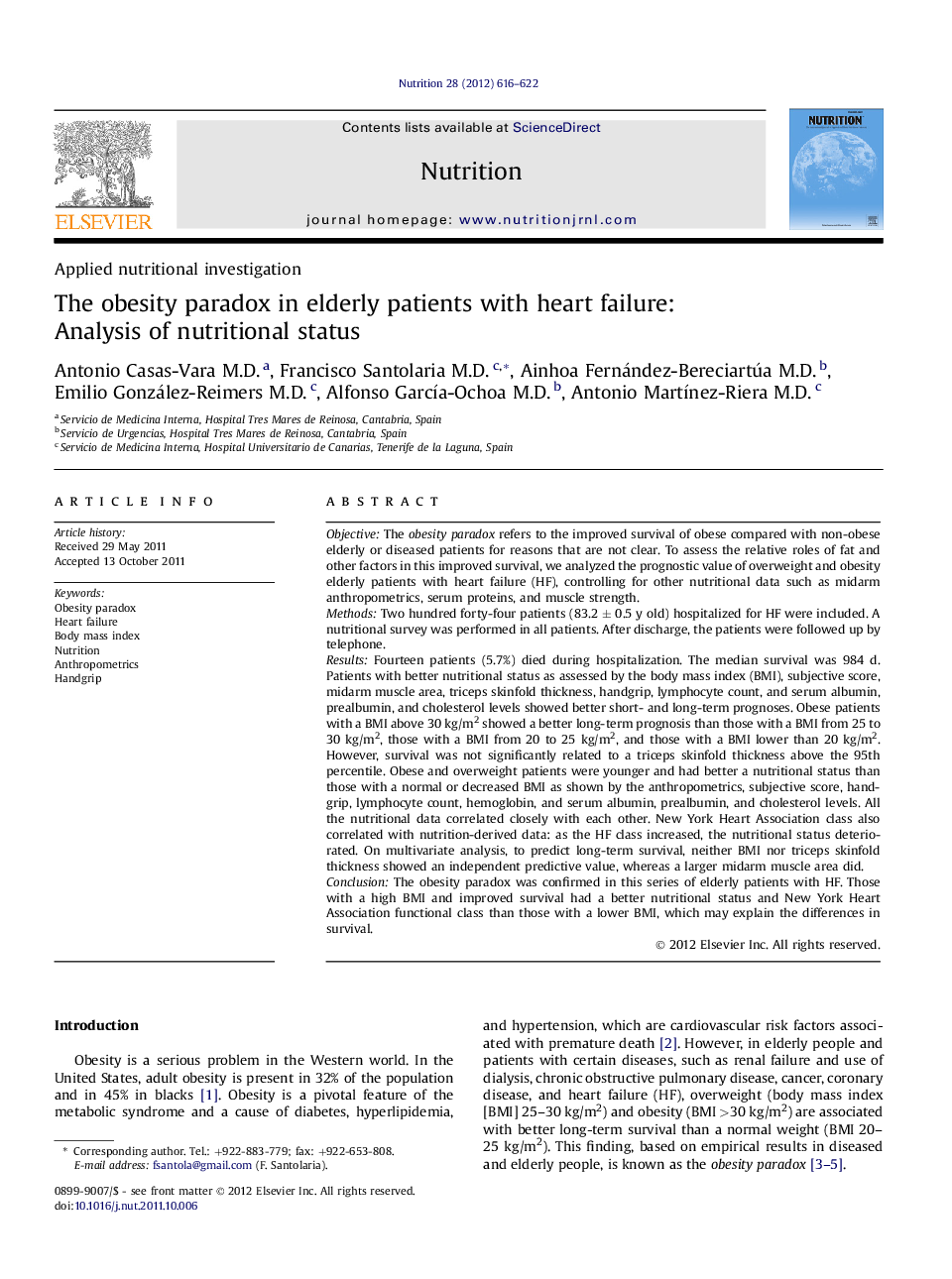| کد مقاله | کد نشریه | سال انتشار | مقاله انگلیسی | نسخه تمام متن |
|---|---|---|---|---|
| 6090370 | 1208572 | 2012 | 7 صفحه PDF | دانلود رایگان |

ObjectiveThe obesity paradox refers to the improved survival of obese compared with non-obese elderly or diseased patients for reasons that are not clear. To assess the relative roles of fat and other factors in this improved survival, we analyzed the prognostic value of overweight and obesity elderly patients with heart failure (HF), controlling for other nutritional data such as midarm anthropometrics, serum proteins, and muscle strength.MethodsTwo hundred forty-four patients (83.2 ± 0.5 y old) hospitalized for HF were included. A nutritional survey was performed in all patients. After discharge, the patients were followed up by telephone.ResultsFourteen patients (5.7%) died during hospitalization. The median survival was 984 d. Patients with better nutritional status as assessed by the body mass index (BMI), subjective score, midarm muscle area, triceps skinfold thickness, handgrip, lymphocyte count, and serum albumin, prealbumin, and cholesterol levels showed better short- and long-term prognoses. Obese patients with a BMI above 30 kg/m2 showed a better long-term prognosis than those with a BMI from 25 to 30 kg/m2, those with a BMI from 20 to 25 kg/m2, and those with a BMI lower than 20 kg/m2. However, survival was not significantly related to a triceps skinfold thickness above the 95th percentile. Obese and overweight patients were younger and had better a nutritional status than those with a normal or decreased BMI as shown by the anthropometrics, subjective score, handgrip, lymphocyte count, hemoglobin, and serum albumin, prealbumin, and cholesterol levels. All the nutritional data correlated closely with each other. New York Heart Association class also correlated with nutrition-derived data: as the HF class increased, the nutritional status deteriorated. On multivariate analysis, to predict long-term survival, neither BMI nor triceps skinfold thickness showed an independent predictive value, whereas a larger midarm muscle area did.ConclusionThe obesity paradox was confirmed in this series of elderly patients with HF. Those with a high BMI and improved survival had a better nutritional status and New York Heart Association functional class than those with a lower BMI, which may explain the differences in survival.
Journal: Nutrition - Volume 28, Issue 6, June 2012, Pages 616-622